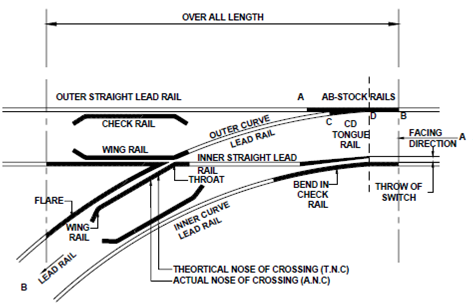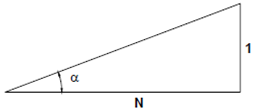Turnouts:
A turnout is an assembly of various components whereby a train running on one track may be diverted to another.
A sketch of a left-hand turnout is given in Figure.

Figure: Left Hand Turnout
It is seen that the turnout has the following components:
(a) A pair of switches consisting of tongue rails and stock rails.
(b) Acute angle or vee crossing.
(c) A pair of check rails.
(d) Four lead rails.
Turnouts used in the Indian railways are designed with respect to the crossing number. The crossing number is defined as the ratio of the spread of the leg of the crossing to the length of the crossing measured from its theoretical nose, vide Figure 8. As per Indian Practice, the following crossings are used:

Figure: Crossing Number
1 in 8½ : Used for good trains, station yards and locations where space is restricted and speeds are low.
1 in 12 : Used for passenger trains and station yards of main lines.
1 in 16 : Used for high speed trains.